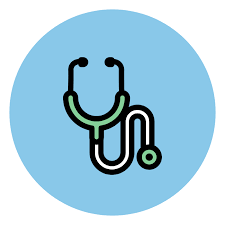How Is Ketamine Therapy Different From Traditional Antidepressants?
By Michael Alvear, Health Author & Independent Researcher
My research is published on these scholarly platforms:
Last Updated:
To understand what makes therapy with ketamine different, let’s compare it to the heavyweight of traditional antidepressants—SSRIs.
But here’s the challenge: studies on both treatments report a dizzying range of results. That makes direct comparisons tricky.
To cut through the noise, I’ve anchored this discussion in the midpoint of these wide-ranging studies—giving you numbers that offer the clearest possible picture without oversimplifying the reality.
But before diving in, let’s get the key variables straight. With SSRIs, effectiveness hinges on three main factors: how long someone sticks with the medication, which specific drug they’re taking, and how response rates are measured (psychiatrists don’t all use the same yardstick).
Ketamine therapy comes with its own set of moving parts: the method of administration (IV infusion, intramuscular injection, nasal spray, or oral dosing), the strength of the dose, and whether patients continue with maintenance treatments.
Studies on both SSRIs and ketamine are scattered across the map, so I’ve leaned on systematic reviews and meta-analyses—the most reliable sources available. They still show wide ranges of effectiveness, but by focusing on the midpoint, I can give you a clearer, more practical way to compare these treatments while acknowledging that real-world experiences vary.
Eight Key Differences Between Ketamine Therapy and SSRIs
1. How Treatment is Delivered
The way you receive each treatment
SSRIs
Daily pill at home. You take a pill once or twice a day, usually at the same time each day.
Therapy with Ketamine
Medical procedure in clinic. Treatment is given either through an injection, IV in your arm or as a nasal spray, always under medical supervision. Each session lasts about 2 hours from start to finish.
Explore My Work In Leading Scholarly Libraries

I’m an independent researcher with work published in scholarly libraries and open-science archives used by clinicians and researchers to discover new research for their own projects.
I write scholarly articles and contribute original, rigorously documented datasets designed to support replication studies, pooled analyses, and evidence syntheses for various aspects of ketamine therapy.
2. Mechanism of Action
How each treatment works in your brain to help with depression
SSRIs
SSRIs work by increasing the amount of serotonin available in the brain. Normally, one neuron releases serotonin into a tiny gap between brain cells called the synaptic cleft to send a message to the next neuron. After delivering the message, most of the serotonin gets reabsorbed by the original neuron, like cleaning up after a conversation. SSRIs block this reabsorption, meaning serotonin stays in the gap longer. With more serotonin available, the next neuron continues to receive signals, which helps regulate mood over time.
Ketamine Therapy
Ketamine works by repairing the brain’s physical structure and improving its function. Depression can weaken connections between brain cells, particularly in areas responsible for mood and decision-making. Ketamine reverses this damage by blocking NMDA receptors, which triggers a surge of glutamate.
This surge activates pathways that stimulate brain growth, increasing the production of proteins like BDNF and mTOR that rebuild and strengthen neural connections. As these connections are restored, communication between brain regions improves, allowing for better emotional regulation and cognitive function. This rapid repair process is what makes ketamine unique—it doesn’t just adjust brain chemistry; it helps rebuild the brain itself.
3. Treatment Experience
What it feels like to receive each treatment
SSRIs
No immediate effects. It’s like taking a vitamin – you just swallow it and go about your day.
Ketamine Treatment
ENORMOUS immediate effects. Dissociation sets in—you may feel detached from your body, as if floating or losing sensation. Your mind separates from physical reality, distorting time and space. Thoughts become distant, emotions feel muted, and the usual sense of self dissolves. Some experience psychedelic visions—colors, shapes, or symbolic imagery—while others drift through a dreamlike, weightless state. Chronic pain may fade, replaced by a deep calm. The experience is surreal, sometimes profound, offering a temporary escape from the constraints of everyday perception.
4. Duration of Treatment
How long you typically need to continue each treatment
SSRIs
Long-term daily use. Most people stay on these medications for at least 6-12 months, often years.
Ketamine Therapy
10-14 sessions for injections or IV then “booster” sessions that can be anywhere from once a month to once a year or none. At least 14 sessions for Spravato with a similar “booster” regimen.
5. Side Effects
Unwanted effects that happen alongside the intended benefits of a treatment
SSRIs
Side effects include weight gain, sexual problems, feeling emotionally numb, sleep changes, and digestive issues. While these often improve over time, they can last months or years.
Ketamine Treatment
Side effects include dissociation, dizziness, grogginess and a bit of nausea. They typically clear up within a few hours.
6. Speed of Action
How quickly you experience a 50% or greater reduction in depressive symptoms.
SSRIs
Therapy with Ketamine
7. Response Rates
A 50% reduction in symptoms from the original baseline score. If your depression score doesn’t drop by at least half, the treatment is considered ineffective.
SSRIs
About 45% of people taking SSRIs experience at least a 50% decrease in depressive symptoms.
Ketamine Treatment
About 55% of people undergoing ketamine treatment experience at least a 50% decrease in depressive symptoms.
8. Remission Rates
Your symptoms are gone or nearly gone
SSRIs
About 35% of people taking SSRIs achieve remission.
Ketamine Treatment
Up to 70% of people using ketamine treatment achieve remission.
Note: Ketamine’s remission rates are underestimated because it’s tested mostly on treatment-resistant depression—the hardest cases to treat. SSRIs show about a 35% remission rate, but that includes everyone—mild, moderate, and severe depression. Ketamine? It achieves up to 70% remission in people with severe, stubborn depression who have already failed multiple treatments.
Now, imagine if ketamine were tested on people with mild to moderate depression—the same group included in SSRI studies. If it can deliver double the remission rate under the toughest conditions, what would that number be if the playing field were level? Ketamine isn’t just beating SSRIs—it’s doing it uphill, in a storm, against the worst cases.

